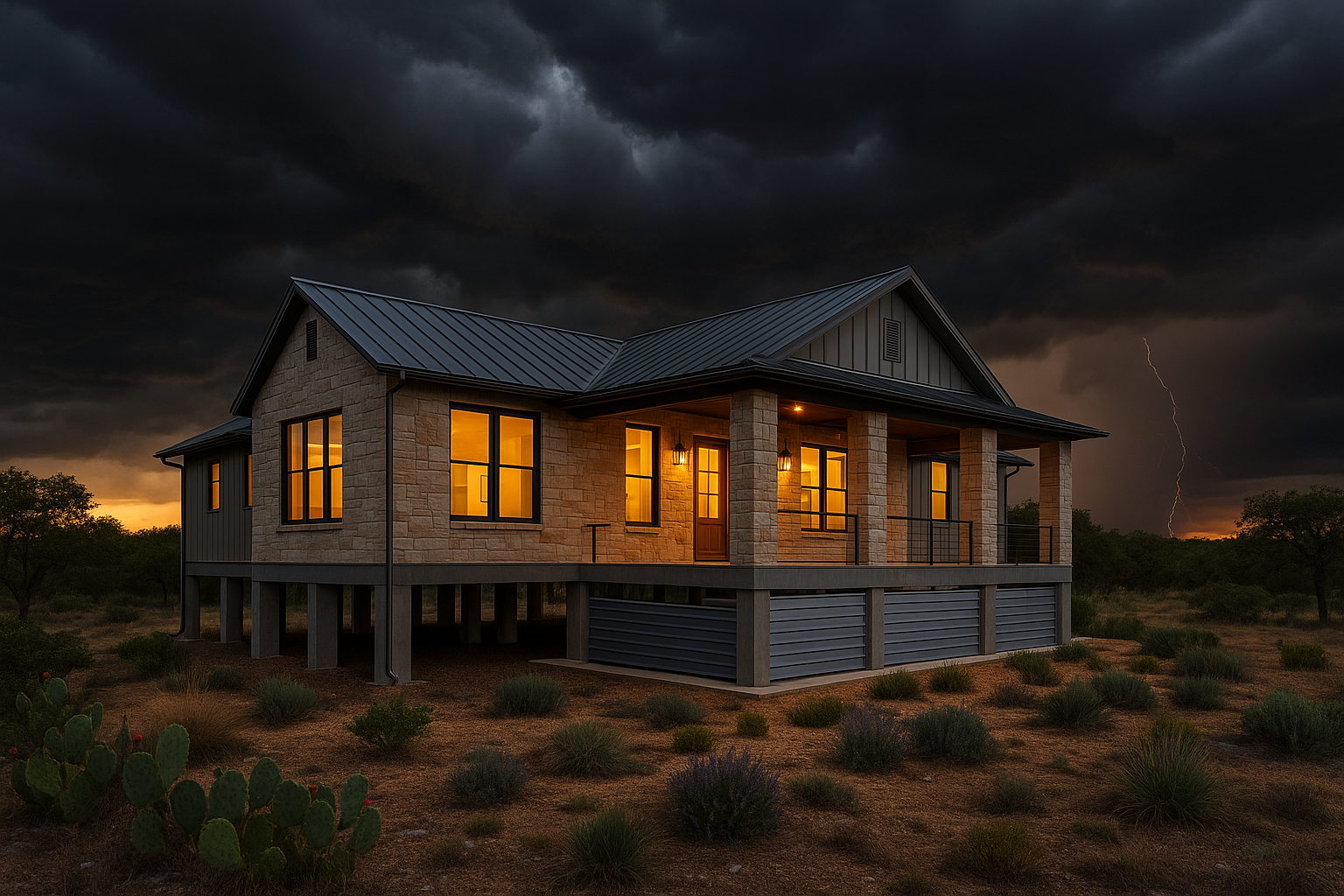Designing Climate-Resilient Custom Homes in Texas


A guide to building Texas custom homes prepared for floods, wind, and weather extremes with resilience in mind.
Site Selection, Elevation, and Lot-Specific Resilience Planning
Designing a climate-resilient home in Texas starts with understanding the risks unique to the Hill Country—flooding, windstorms, hail, and occasional droughts. The right approach begins even before breaking ground, with smart site selection and thoughtful orientation. Choose lots on higher natural terrain, above local floodplains, and away from drainage swales or areas that are susceptible to runoff. Verify the county's most recent flood maps through FEMA or local emergency offices, and understand how city or county regulations will affect foundation height and drainage requirements. Collaborate closely with your builder and engineer to create a storm-ready site plan that may involve elevating the foundation above base flood elevation, strategic grading, and using retaining walls or French drains to redirect runoff.
Building Envelope, Storm-Resistant Materials, and Smart Drainage
Once the site is well-chosen, a resilient building envelope and advanced materials can further shield your custom home from Texas’ wild weather. Specify impact- and wind-rated windows and doors, ideally with laminated glass and reinforced framing, as these fend off windborne debris and limit water intrusion during severe storms. Choose roofing rated for high wind speeds and hail resistance—metal roofs or Class 4 asphalt shingles are the regional gold standard. Apply durable exterior finishes like stone or fiber cement siding, which resist mold, rot, and wildfire better than standard wood. Smart drainage is non-negotiable: oversized gutters, buried downspouts, and permeable pavers around the home’s perimeter handle intense downpours. Integrate a sump pump or interior drainage system if building in a low-lying area. Expanded foam insulation and storm-rated garage doors are also practical upgrades for resilience.
Wild Texas Weather: Maintenance, Insurance, and Builder Expertise
Weather events like hurricanes, tropical storms, and unexpected cold snaps demand readiness from both the design and homeowner side. Opt for low-maintenance landscaping, including native Texas species that help control erosion, filter runoff, and recover quickly post-flood. Conduct regular roof and drainage inspections, especially after major events, and keep emergency preparedness kits on hand. Insurance is critical—document building materials and upgrades for better rates on wind, flood, and wildfire policies. Only partner with builders who have a proven track record with local code compliance and who can explain Texas-specific resilience strategies tailored to your site. For ongoing weather resilience tips, see Red Cross flood guide.
.png?width=400&height=133&name=TRUE%20STONE%20LOGO%20(1).png)